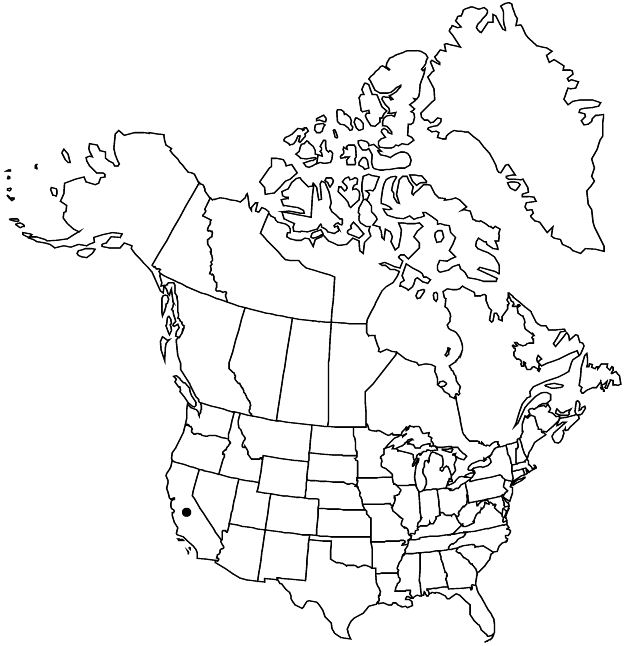Ceanothus palmeri
Proc. Calif. Acad. Sci., ser. 2, 1: 109. 1888.
Shrubs, evergreen or semideciduous, 1–2 m. Stems ascending to erect, not rooting at nodes; branchlets green or gray-green, not thorn-tipped, round in cross-section, flexible or rigid, glabrous or glabrate. Leaves: not fascicled; petiole 3–8 mm; blade ± cupped, elliptic, oblong, or oblong-ovate, 13–30 × 9–15 mm, base cuneate to obtuse, margins entire, apex acute to rounded, abaxial surface pale green, glabrous, adaxial surface green, dull to ± shiny, glabrous; usually pinnately veined, rarely 3-veined. Inflorescences terminal or axillary, paniclelike, 7.5–22 cm. Flowers: sepals, petals, and nectary usually white, rarely pale blue. Capsules 4.5–7 mm wide, lobed; valves smooth, viscid, crested.
Phenology: Flowering Mar–Jun.
Habitat: Rocky slopes, chaparral, conifer forests.
Elevation: 1100–1800 m.
Distribution

Calif., Mexico (Baja California)
Discussion
Ceanothus palmeri occurs in the Transverse and Peninsular ranges of California, with a disjunct distribution in the central Sierra Nevada foothills (Amador and El Dorado counties). Ceanothus palmeri appears to be closely related to and intermediate between C. integerrimus and C. spinosus (W. L. Jepson 1909–1943, vol. 2; M. Van Rensselaer and H. McMinn 1942). We treat this species as distinct from C. spinosus on the basis of its white flowers, and viscid, lobed fruit, but note that some populations intergrade, especially in the Transverse Ranges of southern California. Leaf blades of both C. palmeri and C. spinosus have somewhat shiny adaxial faces, but those of C. integerrimus appear dull. Included here are plants with weakly three-veined leaf blades with somewhat shiny adaxial surfaces from the Transverse Ranges, previously treated by Van Rensselaer and McMinn as part of C. integerrimus.
Selected References
None.
Lower Taxa
"thin" is not a number.